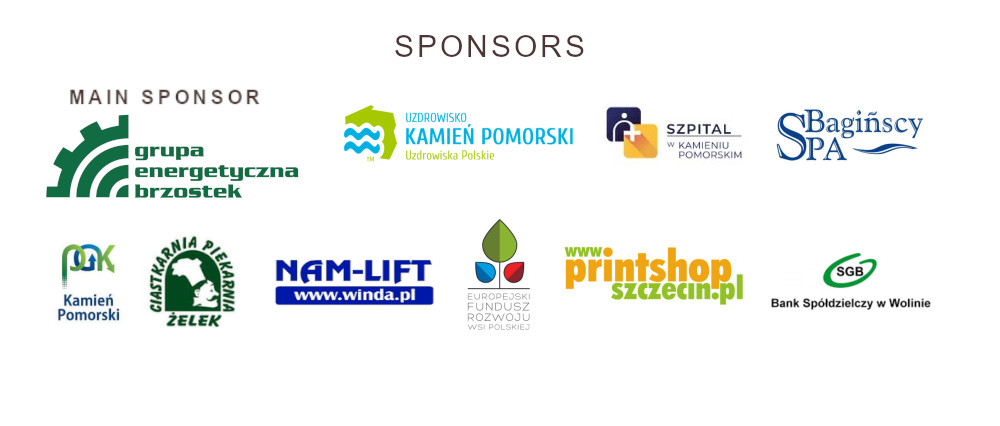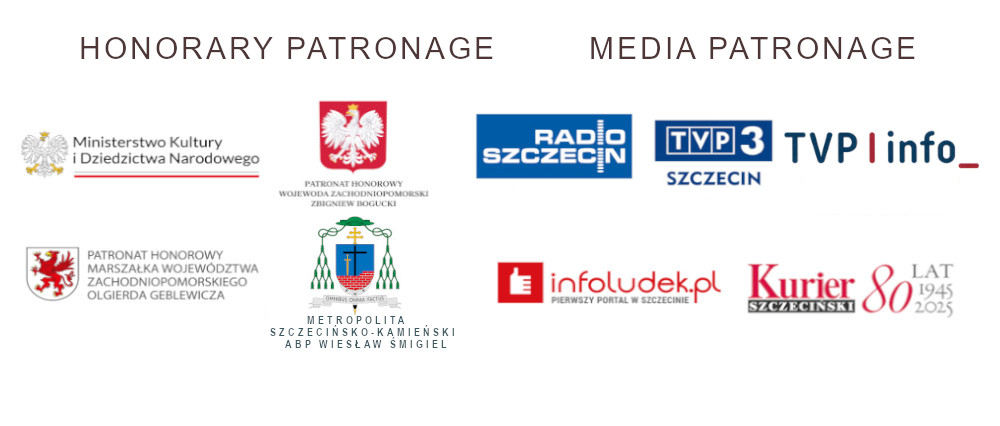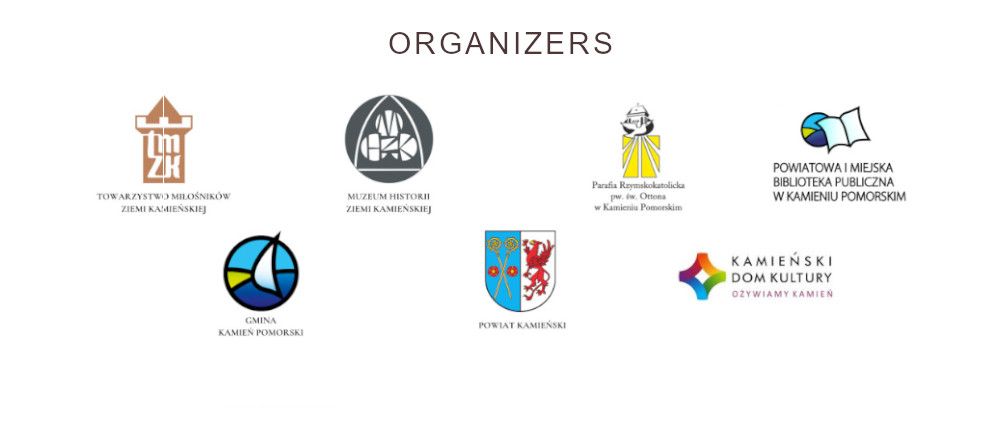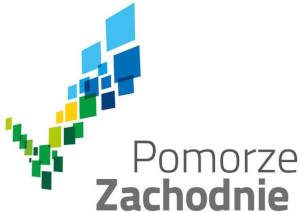History of the Festival
International Festival of Organ and Chamber Music
After the end of World War II, only a small percentage of the organs in the Kamień Cathedral were restored to use. The instrument came back to life in the early 1960s. At that time, attention was drawn to its enormous value and the dramatic condition in which it should not have been. Plans were made to undertake the necessary conservation work to restore it to its former glory. On August 26, 1961, "Głos Szczeciński" in an article entitled "Kamień Organs of a Higher Class than Oliwa Organs?" reported on the discovery of an acoustician by Professor Marek Kwiek from the University of Poznań, who assessed that they were as good as the organs in Oliwa, Kazimierz nad Wisłą or Leżajsk and appealed for their renovation. This article recalled the Kamień organs. A favorable atmosphere was created around this instrument, which was brought out of oblivion. In Szczecin, there was even a proposal to move them to the local Castle of the Dukes of Pomerania. Fortunately, this idea was effectively torpedoed by the Provincial Conservator of Monuments, Stefan Kwilecki.
It should be added here that since July 1961 the cathedral had been under the professional care of a conservator on a daily basis. At that time, the Bishop's Curia of the Gorzów Diocese, to which Kamień belonged until 1972, sent to the local parish as a vicar Fr. Roman Kostynowicz, a graduate of the Faculty of Fine Arts at the Nicolaus Copernicus University in Toruń, who had been the diocesan officer for church art in the Gorzów Curia since 1959. On October 12, 1962, he became the parish priest of the Kamień parish, beginning the first post-war conservation work in the cathedral, also taking care of the organ, making invaluable contributions to the Kamień festival.
The first conservation work on the Kamień "king of instruments" was carried out by the "W. Berndt" organ workshop from Wałcz. From June 1963, organ presentations for tourists were held on the repaired organ several days a week, during which the cathedral organist Władysław Lupa, later a long-time registrator of the festival, played.
It was then that serious consideration began to be given to using the organ as a concert instrument. In 1966, Zbigniew Pawlicki, an activist of the Szczecin Branch of the Poznań Music Society named after Henryk Wieniawski, head of the Music Section of the Szczecin Polish Radio Station and co-initiator and co-creator of the Kamień festival, recalled in the first issue of "Rocznik Kamieński" published by the Society of Lovers of the Kamień Land, that the idea of organizing concerts came from activists of the Szczecin branch of the Poznań society, headed by Alfons Borkowski, who died in 1963. Alfons Borkowski was for some time the president of the Szczecin structures of the Music Society. He knew the Kamień organ well. He had been associated with Kamień Pomorski since 1946. He taught music at the local Pedagogical High School and lived in the city until 1960. He also took part in the post-war start-up of the organ.
The Music Society was also active in Kamień. A kind of reconnaissance on the Kamień land was the concerts organized by them in 1963 in the District and Municipal Public Library as part of "concerts by candlelight and coffee" allowing them to start cooperation with the Society of Lovers of the Kamień Land operating in the city.
In the tense situation of the first half of the sixties, the "struggle for the rule of souls" during the celebrations of the church Millennium of the Baptism of Poland and the party-state Millennium of the Polish State, which were approaching their climax, the acceptance of concerts in the Kamień Cathedral, expressed both by the ruling Polish United Workers' Party and the Gorzów Bishop's Curia, became crucial, without which the event could never have taken place.
On Tuesday, June 23, 1964, at 8:00 p.m., the song "Gaude Mater Polonia" performed by the Szczecin University of Technology Choir under the patronage of conducted by Jan Szyrocki and "Organ Prelude" by Jan Podbielski played by the Szczecin organist Rudolf Rożek, the first of the "Organ Concerts" was inaugurated.
After the first concert, "Głos Szczeciński" wrote about almost five hundred listeners present in the Kamień Cathedral. A special coach trip from Szczecin was organized by the local branch of the Polish Tourist and Sightseeing Society.
During the next five concerts, the following people sat at the organ counter: Prof. Romuald Sroczyński from Wrocław, Prof. Józef Pawlak from Poznań, Joachim Grubich from Kraków, who was then called the "rising star of Polish organ music", and twice Rudolf Rożek. Chamber music was represented by violinists Tadeusz Mocek, Norbert Karaśkiewicz, Roman Wolf and Kazimierz Zwiercan, cellist Roman Suchecki, vocalists Jerzy Artysz (baritone), Halina Paterak (soprano), Lidia Groś-Trzcińska (mezzo-soprano) and the Szczecin University of Technology Choir and the Szczecin Boys' Choir.
In the reproduced program of the last meeting with music in the Kamień Cathedral, which took place on September 15, 1964, we read: "While bidding farewell to our listeners, we express our hope that the traditional Kamień concerts will continue in the years to come". And so it happened. Voices were becoming more frequent, like the one expressed in "Glos Szczeciński" on 7 October 1964, that the concerts "will become a permanent musical tradition of the province". Their settlement from 1964 ended with a deficit partially covered by the Culture Department of the Presidium of the WRN. Income from tickets amounted to 19,742 PLN. Expenditures amounted to 24,667 PLN 36 gr. The main burden in organizing the first concerts was borne on its shoulders by the Szczecin branch of the Poznań Music Society, established in 1962. The Kamieńskie "Organ Concerts" were, next to "concerts with coffee and candles", the most important manifestation of the branch's activity, which in February 1965 became independent and took the name of the Henryk Wieniawski Szczecin Music Society. Both musical events became well-known. They responded to social demand. They were attracted to the setting, different from the traditional concert, in the historic interiors of the Kamień temple and a lively commentary explaining the works performed in the case of "concerts with coffee and candles" and also, as "Kurier" wrote on March 1, 1965, snobbery, because these concerts "were the right thing to do".
On June 4, 1965, the first of the Kamień concerts of this year began in a new formula - the Festival of Organ and Chamber Music in Kamień Pomorski. The event was inaugurated, just like the year before "Organ Concerts", by the song "Gaude Mater Polonia" performed by the Szczecin University of Technology Choir, after which the organ part was started by Rudolf Rożek, well-known to the Kamień audience.
A leaflet with the program was published, which assumed seventeen concerts lasting until September 24, organized by STM and TMZK. The Artistic Management of the festival was provided by the Artistic Council of the Music Society and the renowned organist, Prof. Feliks Rączkowski from the State Higher School of Music in Warsaw and the director of the Organ Festival in Oliwa.
The concert of June 25th went down in history of the 1st festival, not so much because of the performers taking part in it, but because of the incident that occurred during it. The Kamien police called the US consul in Poznań out of the concert, ordering him to leave the seaside area because of the regulations in force at the time prohibiting consular service vehicles from entering the area.
And so the festival developed in the following years. Thanks to the determination, passion and support of many people and institutions, the concerts could take place, and a year later they even turned into the Organ and Chamber Music Festival. The Kamien summer meetings with classical music became known throughout the country. Kamień Pomorski became the second, after Oliwa and its Organ Festival, place for summer concerts in Poland. The setting of the concert in the historic interiors of the Kamień temple and its uniqueness, which was the combination of organ and chamber music, attracted people to Kamień. Since 1979, the Kamień event formally took on its current name of the International Festival of Organ and Chamber Music, although performers from abroad had already performed during the first edition of the event in 1965.
In 2014, the jubilee fiftieth edition of the International Festival of Organ and Chamber Music took place. Its rank was emphasized in a special way by the honorary patronage of the President of the Republic of Poland. The jubilee became an opportunity to sum up and recall the enormous significance of the Kamień festival in the musical life of Western Pomerania and Poland. This is why Kamień was called the "musical summer capital of Poland" many years ago.
For half a century, the festival has been organized by the Society of Lovers of the Kamień Land. In this work, the following entities cooperated with TMZK in subsequent years: the Szczecin Music Society, the Szczecin Culture Society, the Voivodeship House of Culture – the Pomeranian Dukes' Castle in Szczecin, the Kamień Pomorski Health Resort, the National Concert Office, the Kamień Culture Centre, the Roman Catholic Parish in Kamień Pomorski and the Mayor and City Council in Kamień Pomorski.
The Kamien Festival is several hundred concerts, hundreds of performers, thousands of bars and just as many listeners. Over the years, organ and chamber music virtuosos from all over the world have performed for the audience gathered on Friday evenings in the cathedral in Kamień Pomorski. In 2015, the Kamień International Organ and Chamber Music Festival, the oldest in Western Pomerania and one of the oldest in Poland, entered another decade of its existence in order to fulfill the wish of Prince Ernest Bogusław de Croy "that God Almighty […] would deign to preserve the organ until the end of the world".

 DE
DE  PL
PL  EN
EN 



